The Fungi Museum of Chile MDH is a museographic project but also a research one. For one of its last appearances at the Museum of Contemporary Art of Valdivia, they combined the organic with the inorganic through the collaboration with the Chilean artist based in New York, Iván Navarro, who created especially for this, the “Vigilantes”, halogen tube sculptures that appeal to this transhumanism.
Its founder Juan Ferrer tells us about his questions about pollution and a not very encouraging future, where fungi are a solution as recyclers and natural metabolizers.
By Carolina Martínez | Images courtesy Fungi Museum MDH | Photography: Pascual Mena
Carolina Martínez: Tell us about the project “Fungi Museum”. How was born and why?
Juan Ferrer: The Fungi Museum (MDH) was born from a project that the Armar Foundation hold in 2015, called “Justice to the Fungi Kingdom”, developed by the curator Camila Marambio joint with Giuliana Furci, director of the Fungi Foundation, Nicolás Arze and Nicolás Oyarce, in collaboration with several national visual artists. Nicolás Oyarce, who is the creative director of the MDH and my right hand in the project, working as well as the artist for the foundation and proposed to refine the image to do “real” justice to the Fungi Kingdom from the aesthetics of nature. In that context, I started my professional practice in the Fungi Foundation, doing mostly graphic design work, learning a lot from the Fungi Kingdom and there I found a lot of information and unexpected beauty, so during the year of my university thesis, I developed a curatorship with artists, designers and scientists who have worked directly with fungi: they were part of the first appearance of the MDH in November 2016, at the Social Club of Artists in the Matta neighborhood (Santiago, Chile), where were answered questions such as what are the fungi, what they do, how they live, how they reproduce, and also some medicinal and contemporary uses were shown. The MDH was born basically due to the need of creating a space for the dissemination of fungi kingdom, where the disciplines of science, art and design are crossed in order to generate new aesthetics, and at the same time, educational experiences since very little is known of the Fungi Kingdom. Especially in Chile, where within popular language the phrase “worth mushroom”, addressing the fungus as something worthless, thus generating a reality from the language that is far from the transcendence of the fungi within our ecosystem.
Over time the project was gaining strength and we get sponsoring from the Fungi Foundation, continuing the work with Giuliana in the design of the Field guide “Fungi of Chile” Vol. II, alliances with activists of the local and global scene, we assembled our team of design led by Rosario Ureta and we manage a support network with all the lovers of the third kingdom that grows every day.
“The MDH was born basically due to the need of creating a space for the dissemination of fungi kingdom, where the disciplines of science, art and design are crossed in order to generate new aesthetics, and at the same time, educational experiences since very little is known of the Fungi Kingdom. Especially in Chile, where within popular language the phrase “worth mushroom”, addressing the fungus as something worthless…”
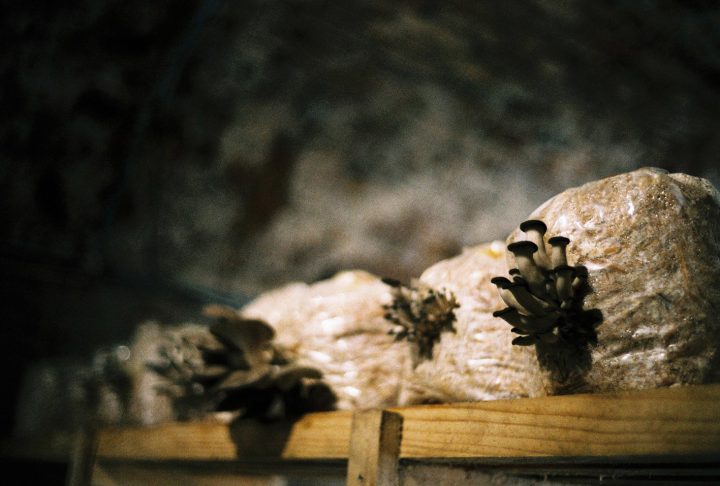
CM: The second Apparition -this is because it is an itinerant and temporary project- at Museum of Contemporary Art (MAC) of Valdivia, tried (a) to keep a link with science, also questioning the friction between the organic and the inorganic, and the new paradigms from where to imagine the life. By this, I mean that it is not just a sample book, but that it generates the appearance of mushrooms and their survival under certain characteristics of the exhibition space, which makes me think about how we imagine a possible future of humanity underground. What relationship could you establish in this story between the creation of life from one of the base organic kingdoms for the existence and the new conditions of humanity and an imminent future that is not very encouraging?
JF: One of the goals s of the MDH is to replace this dystopic view with a way of building a new aligned and conscious reality with all the kingdoms that make up our idea of the planet, and from there generating the paradigm shift in its evolution.
The sexuality of fungi and their reproductive system is manifested through spores, microscopic containers of genetic material, where they can remain dormant for years; which is a state in which metabolic activities decrease to conserve energy, until the environmental conditions, temperature, humidity, among others, are given for proliferating. The concept of dormancy was installed as one of the symbolic edges of the project for our production process.
Along our appearances with the MDH new questions are opened and the conditions evidence this: the planet suffers from a level of unsustainable environmental pollution, so it is necessary to study fungi: they are the recyclers of nature, they metabolize the decomposing organic matter to return it to the environment, so that the plants and later the animals consume them, that is, they give continuity to the biological cycle.
The fungus is made up of minimal tubular units called hyphae, and these, in turn, make up the mycelium, which lives underground or inside the plants, colonizing its substrate. When the substrate is completely colonized and enough biomass is formed, the mycelium forms the mushroom, the reproductive body of the fungus where the spores are formed. The mycelium can extend so much that the world’s largest living thing is a fungus of the species Armillaria solidipes that lives underground in Malheur National Park in Oregon, USA, reaching approximately 890 hectares.
The great American mycologist Paul Stamets proposes several ways of how fungi could save the world using mycoremediation techniques. In his book “Mycelium Running”, he explains that mycoremediation consists of using fungi to regenerate soils, breaking bonds of molecules created by the human, such as the degradation of plastic or petroleum, among other applications that could effectively save us from an environmental catastrophe, or at least, recover the planet. So, the new paradigm from where imagining life is simply to think of it as a cycle where the tasks of recycling and decomposing our waste are crucial to maintaining a balanced flow of energy. Permaculture, for example, is a design science that basically states this, living without generating waste, where human existence does not interrupt, even more, it enhances the ecological cycle and does a responsible use of the means provided by nature.
“The great American mycologist Paul Stamets proposes several ways of how fungi could save the world using mycoremediation techniques. In his book “Mycelium Running”, he explains that mycoremediation consists of using fungi to regenerate soils, breaking bonds of molecules created by the human.”
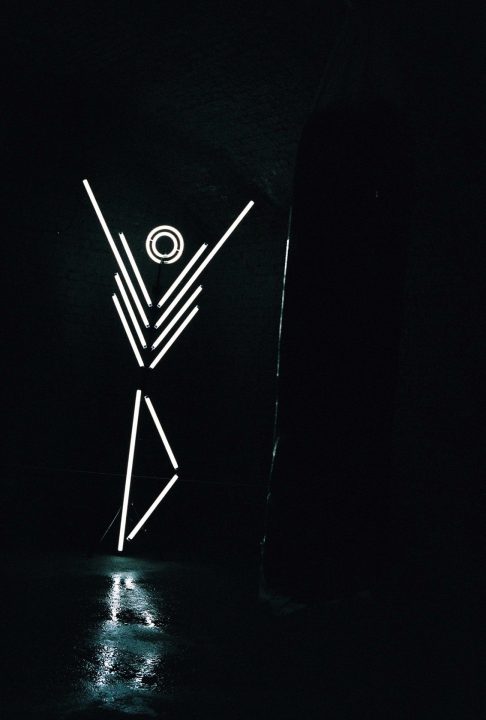
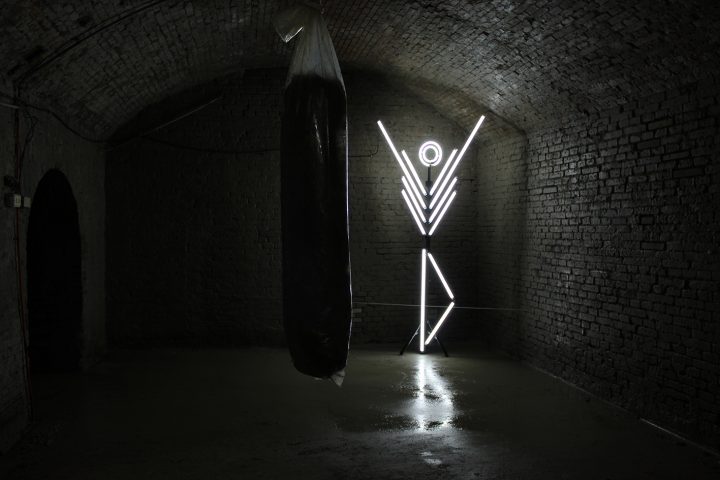
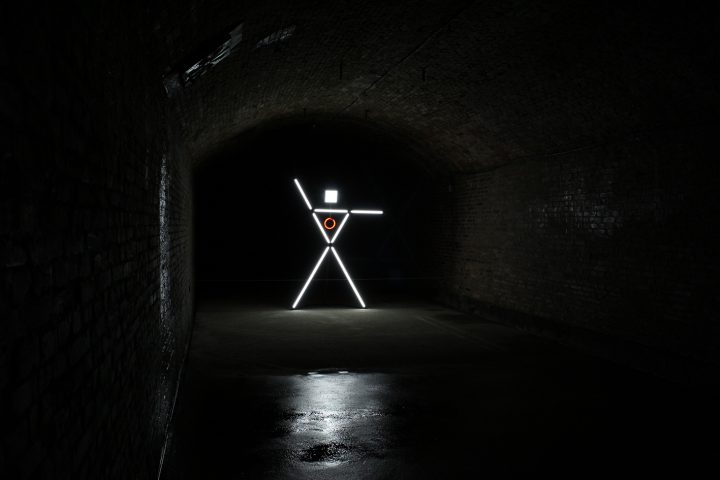
Within the possible imaginaries, in “Vigilantes” of the Fungi Kingdom, of the Chilean visual artist Iván Navarro, we proposed these sculptures of light as a post-humanity, Cyborg bodies, more illuminated. Watchers who help us to see in the darkness.
It is under this logic of a seemingly invisible underground biological existence, that this exhibition was raised in the vaults of the MAC of Valdivia, thus providing an immersive experience that was one of the objectives of the exhibition.
CM: The link between art and science is not something new, but it always seems is given in a unidirectional and non-proportional way of exchange, where artistic practices use more the science and technological advances than the science does with the art. How have you faced this situation or how do you see it and what do you expect from this dialogue?
JF: I try to apply any methodology beyond a discipline in itself for developing the MDH experiences. That is to say, from the visual arts I extract the museography that allows me to attribute to the fungus an artistic value, and in mycology, I find the basis for the content of these experiences.
In this Apparition, the cultivation of the fungus is considered as a work of living art, where its form was transformed as the exhibition went on, showing a process that we do not usually see, and also we displayed an analogy with the production processes of the artworks, which are generally invisible to the visitor. By giving this museological value to the fungus, new reflections are generated and the meeting is enriched. Also in this way, the curatorial practice allows me telling a story, where for do it I use artworks, in this case, the pieces of Iván Navarro, who represent some “guardians” or “watchers” of this mysterious kingdom. This concept of vigilance was developed through two metaphors; the fungi, without us seeing them, have been in charge of guarding that life is possible on Earth: they were the ones that allowed life would pass from an aquatic environment to a terrestrial one, therefore they would become the guardians of life. And on the other hand, these guardians have some anthropomorphic features because it is proposed that now, we, the human beings, watch the fungi and learn from them as we have done with the plants.
Anyway, when we consider to ourselves as a Museum, we want to welcome all the related practices and show them in an attractive and close way, exhibiting science not only for scientists. I could say that I use artistic ways for communicating biological contents.
“From the visual arts I extract the museography that allows me to attribute to the fungus an artistic value, and in mycology, I find the basis for the content of these experiences.”
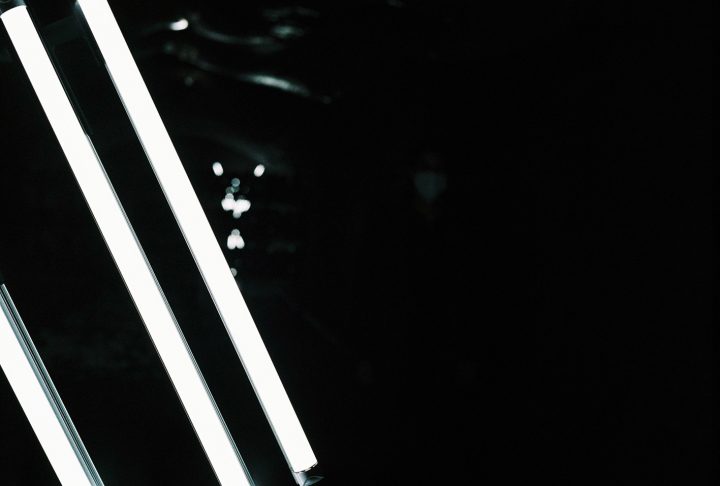
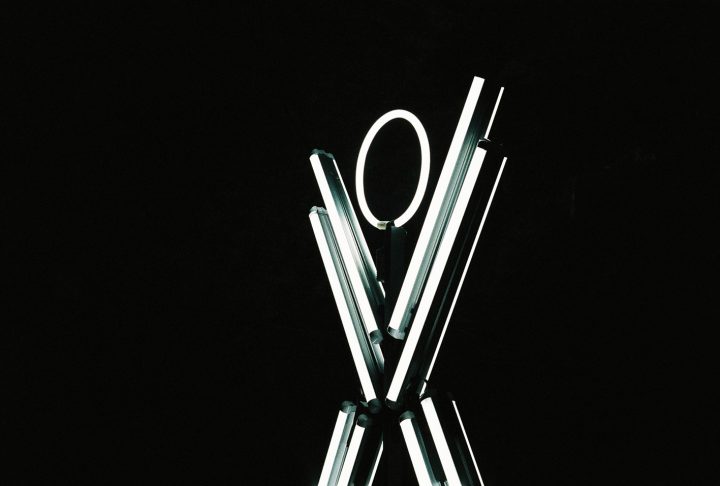
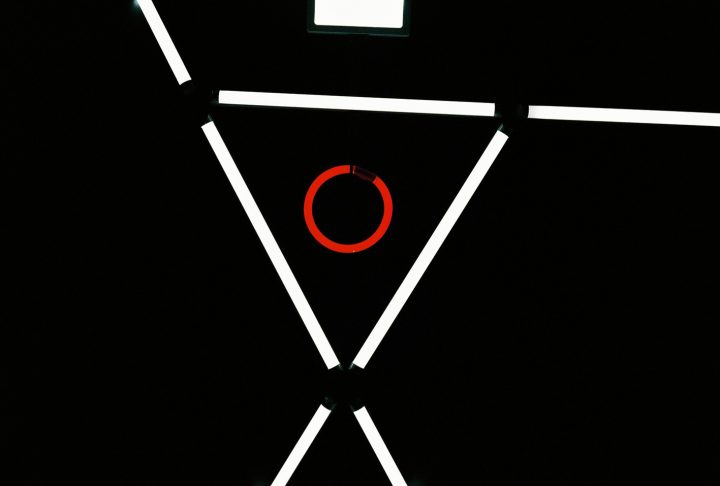
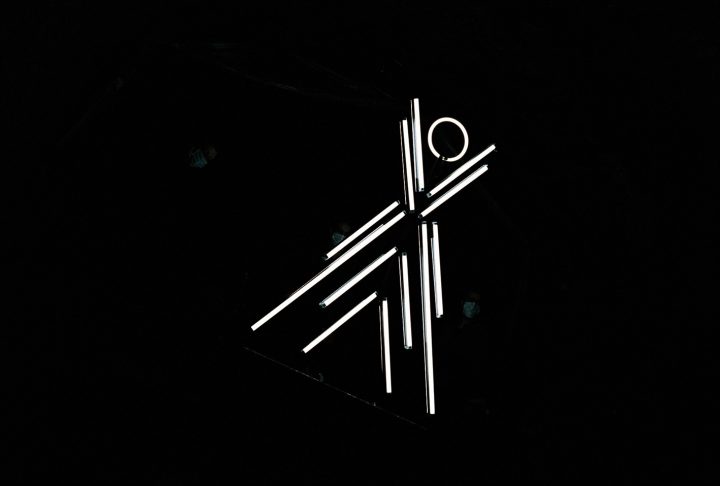
CM: Being an installation that can be framed within what is contemporary art, do you feel that you have a thesis regarding the exhibition? What is your main postulate with respect to exhibiting within this context something that for many should be in the Museum of Natural History or in a Botanical Garden?
JF: The MDH proposes a biomimicry with fungi and their varied environments to inhabit inside and outside museums, since they are ubiquitous, that is, they are everywhere. The MDH will appear where the necessary conditions are given, and the exhibitions will be inevitably site-specific since each substrate has its characteristics that will make each of these experiences unique. This Apparition was located in the Museum of Contemporary Art of Valdivia, belonging to the Austral University of Chile, which has always had problems with fungi due to the humidity present due to being located next to the river.
Therefore with this exhibition, we wanted to go beyond the boundaries of how museums are conceived these days, when their purposes are leaving aside the archivist dimension to go for the creation of new experiences that successfully engage with an audience (Chiu, 2013)[1].
On the other hand, it is absolutely contradictory to introduce fungi inside an art museum, because of the conservation of the collections. Even though MAC Valdivia, allowed us to do it, opening an interesting reflection on museums’ work and curatorial practice this past year. Nevertheless, after the MDH first apparition, I could note that anywhere nature is being exhibited, nobody feels alienated about it.
CM: What are the variants to which the different kinds of fungus in culture were subjected?
JF: The two species that were exhibited vary from each other as they are a primary decomposer and the other, secondary. “Agaricus bisporus: In terms of crops, they are usually mentioned as secondary decomposers, because they act on an organic matter after another organism previously has already begun the decomposition process. An example of this is manure and compost. It is known by the common name of “Paris mushroom”, a highly commercial species, and perhaps the best known by mushroom dinners, so much so that many often use the terms mushroom and fungus as if they were synonymous. Pleurotus ostreatus (oyster mushroom): It is a fungus with a simple cultivation technique, it likes substrates high in lignin, decomposing hard materials such as wood and cereal straw, mainly wheat and oats. For this reason, it is considered a primary decomposer, being generally the first decomposer within the degradation process. Its fructifications are showy and grow in clusters, there are varieties of different colors such as white, gray and brown. There are other Pleurotus species that use the same cultivation technique as “Pleurotus citrinopileatus” (yellow color) and “Pleurotus djamor” (pink color and sweet taste).” explains Daniela Morales, the fungi production manager for the exhibition.
In matters of environmental conditions, the variants were temperature, humidity and exposure to microorganisms since we were in a non-sterilized place. So the residence began with a strenuous preparation of the vaults to receive the crops. This consisted of the application of lime on the walls, to eliminate microorganisms that could contaminate the substrate. On the other hand, for the incubation of the mycelium, we had to install greenhouses inside the vaults to better control the temperature conditions since we had to increase it by almost 10ºC.
“When we thought about the lighting system for fungal crops in the vaults, Ivan’s name came up immediately, we wanted to make him part of this story. In the experimental residency in the MAC of Valdivia we worked in the darkness all the first part, those months we worked in dormancy and when the artworks of Ivan arrived everything appeared and made sense. We were all lighted up.”
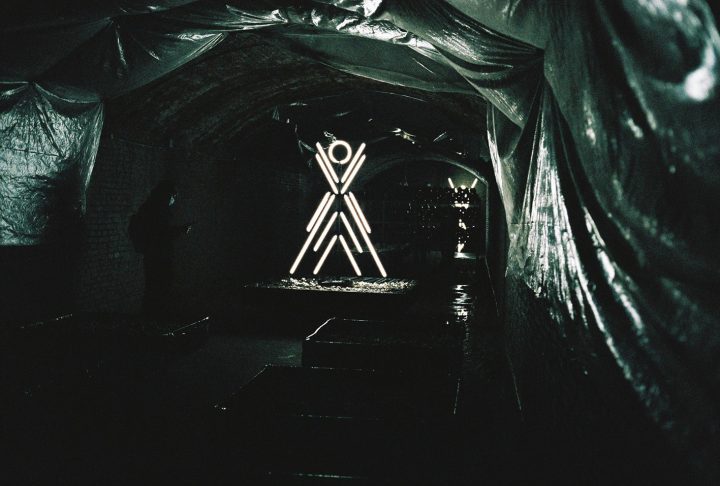
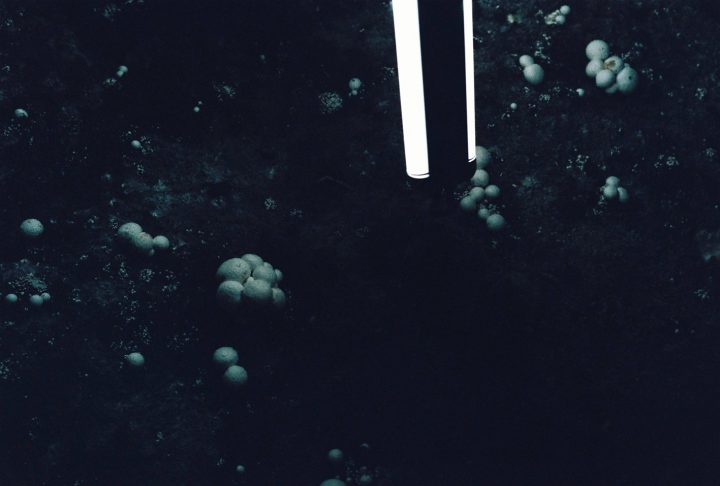
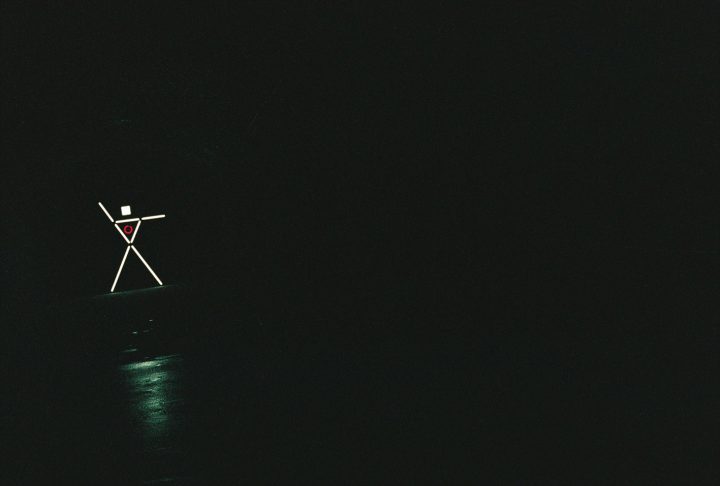
CM: “Museo del Hongo – Aparición II” (Fungi Museum – Apparition II) was sheltered and protected by the vigilantes of Iván Navarro; sculptures made in his classic halogen tubes. Do you think that this inorganic variant managed to modify the composition of the fungi or changed its growth and characteristics? Why did mushrooms need these watchers?
JF: The process where we worked with Navarro in the second appearance, happened organically. We participated in the “Konantü” project by Courtney Smith and Iván Navarro, then in the “Cuaderno cuadricular” project together with many artists, museum directors, and curators in tune with the MDH, in the context of the 12th Media Arts Biennial of Chile. So when we thought about the lighting system for fungal crops in the vaults, Ivan’s name came up immediately, we wanted to make him part of this story. In the experimental residency in the MAC of Valdivia we worked in the darkness all the first part, those months we worked in dormancy and when the artworks of Ivan arrived everything appeared and made sense. We were all lighted up.
One of the characteristics of fungi that differentiate them from plants is that they do not make photosynthesis. Even so, light is necessary for the cultivation of some fungi since they absorb some wavelengths within the blue-green spectrum, which stimulate the metabolisms that regulate energy and growth requirements, and initiate mechanisms to create high levels of protein, vitamin D and medicinal properties. Light in cultivation practices can be applied naturally (indirect/diffuse light) and fluorescent tubes. So, mushrooms not only need these watchers for growing up, but they also need them at the sociocultural level, since more people are needed to do them justice, make them visible, study them and spread their wonderful work: work on death to give life, thus closing the cycle.
CM: The exhibition featured a series of actions within what could be called a public program. Tell us about these activities and how did you expect people to relate? Do you think the viewer felt more attracted to the artistic experience than to the biological experience?
JF: I have a hard time separating the experiences since they support each other in the same way. One of the goals of the MDH is mixing and manifest the convergence among the disciplines; break with those classifications and labels. I could not make a difference in the interest of the audience. Even though, it was visited by more than 1,000 people, which is historical for the MAC of Valdivia.
On the other hand, the activities that could be said to be distinctly “artistic” were guided visits (led by the curator, the mushroom producer and the creative director of the MDH). And the purely “biological” activity would be the sustainable collection workshop taught by Daniela Torres, executive director of the Fungi Foundation. The closing event also consisted of a dinner where we ate the mushrooms of this Apparition, which would be a gastronomic experience, so there was also another audience, not related to biology or art, who was attracted by the exhibition. The MDH attempts to address all dimensions from which the Fungi Kingdom can be addressed.
“We have much content to communicate and actions to be carried out from nature to a possible post-human world, post-corporeal, fluid, anti-colonialist from its disciplines, not binary, connected through an imaginary or real mycelium, as fungi do with the information of the whole forest.”
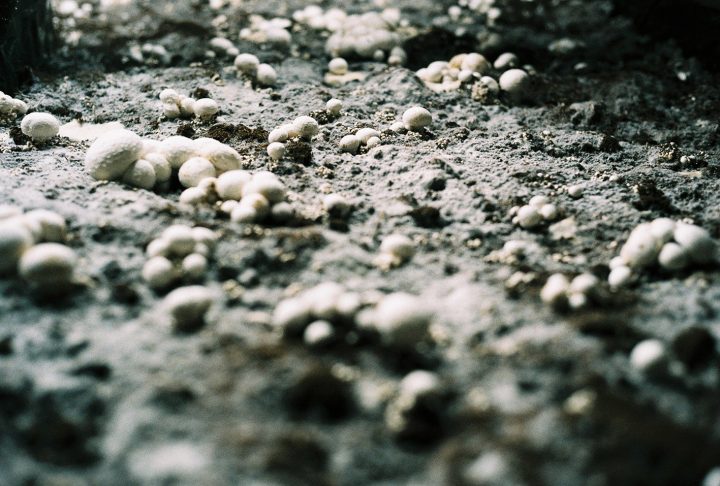
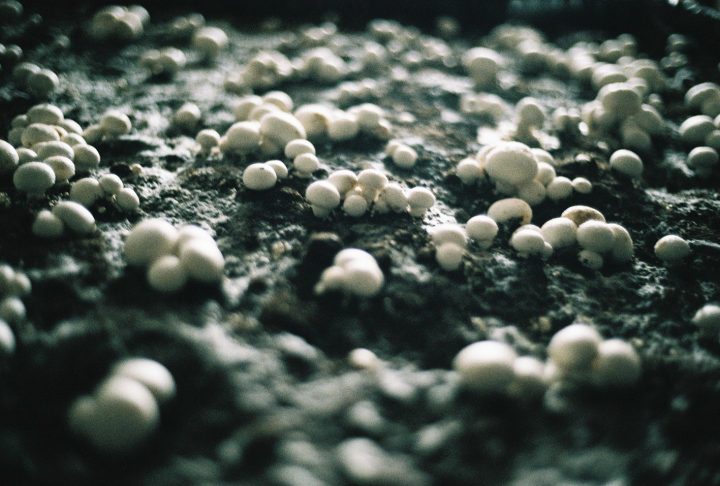
CM: What are the next plans for the “Fungi Museum”? Do you project some kind of new interaction between the organic and this transhumanism?
JF: We are working for upcoming Apparitions, but as the mushrooms, the MDH appears and disappears. The production process of this second appearance helped us understand how to activate future appearances. We are developing several projects in a quiet way since the reception of our project has been positive and is gaining strength week by week.
As we are working with a kingdom, we have much content to communicate and actions to be carried out from nature to a possible post-human world, post-corporeal, fluid, anti-colonialist from its disciplines, not binary, connected through an imaginary or real mycelium, as fungi do with the information of the whole forest, connected through a rhizomatic, transversal and transcendental vision, which connects all ideas.
[1] Chiu, M. (2013) Making a Museum in the 21st Century. Asia Society, New York, EE.UU.

 Español
Español